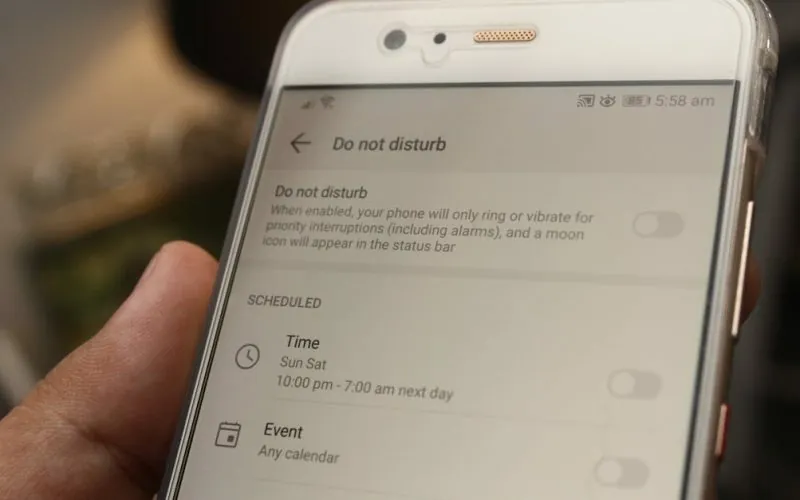Table of Contents
ToggleSwitching from Android to iPhone can feel like jumping into a different universe. Suddenly, everything’s a little shinier, a bit more polished, and you might even find yourself saying “Siri” instead of “Google.” But what about those precious text messages? Can you really forward them from your trusty Android to your sleek new iPhone, or is that just a tech fairy tale?
Overview of Text Message Forwarding
Transferring text messages from an Android device to an iPhone can pose challenges. Not all messaging services provide direct support for this task. Android and iPhone use different operating systems, which complicates the process.
Several methods exist for forwarding messages. Utilizing third-party applications simplifies the transfer. Apps such as “Move to iOS” assist users in moving their data effectively. This app allows users to transfer messages, photos, and other important data seamlessly.
In scenarios where users prefer not to use apps, manual forwarding remains an option. Manual forwarding entails selecting messages on the Android device and sending them individually to the iPhone. Its time-consuming nature may not appeal to everyone.
Another method involves using SMS and MMS settings to change carrier access. Carriers may provide services that allow users to send messages across devices. However, limitations regarding specific message types may apply.
Data cables serve as another solution for some users. Connecting both devices to a computer allows for the transfer of data using specific software. This method may require additional technical knowledge.
Overall, while forwarding text messages from Android to iPhone isn’t straightforward, several viable options exist. Each method carries its unique set of steps and potential hurdles. Users can choose the method that best aligns with their preferences and comfort levels.
Understanding Compatibility Between Android and iPhone
Transferring text messages between Android and iPhone poses unique challenges due to their distinct operating systems. Understanding compatibility helps users navigate the transfer process effectively.
Key Differences in Messaging Apps
Messaging apps on Android differ significantly from those on iPhone. Android utilizes various messaging platforms like Google Messages, WhatsApp, and Facebook Messenger, while iPhone primarily relies on iMessage. With iMessage, users enjoy features like end-to-end encryption and seamless syncing across Apple devices. No native solution exists to directly transfer messages across these apps, creating hurdles for users switching between platforms.
Limitations in Text Message Forwarding
Several limitations hinder text message forwarding from Android to iPhone. Many messaging services don’t support direct transfers, leaving users with fewer options. Transferring messages manually can be tedious, requiring users to copy and paste conversations one by one. Third-party applications may facilitate some transfers but often come with risks of data loss or misuse. Network carriers also impose restrictions on certain message types, further complicating the process. Therefore, users face complexity in ensuring their messages reach the new device.
Methods to Forward Text Messages
Transferring text messages from Android to iPhone presents multiple options. Each method provides unique advantages and potential challenges.
Manual Forwarding Steps
To manually forward text messages, open the messaging app on the Android device. Select the conversation that contains the messages you want to transfer. Long-press the specific message. Afterward, choose “Forward” from the options. Enter the recipient’s phone number or email address. Finally, send the message. This method offers control over which messages to forward, though it can prove time-consuming for large conversations.
Using Third-Party Applications
Third-party applications provide a more streamlined approach for message transfers. Apps like “Move to iOS” facilitate direct message transfers from Android to iPhone. Users first need to install the app on their Android device. During the iPhone setup, choose the “Move Data from Android” option. Follow the on-screen instructions, including entering a code displayed on the iPhone. This method simplifies the transfer process, ensuring that most messages along with other data are transferred without manual effort.
Tips for Successful Text Message Transfer
Transferring text messages from Android to iPhone can require careful planning and execution. Start by using the “Move to iOS” app, which simplifies the transfer process during the initial setup of the iPhone. Ensure both devices are connected to a reliable Wi-Fi network, as this facilitates a smooth data transfer.
Another effective method involves manually forwarding messages. This approach allows for selective transfers but can become tedious with long conversations. When opting for manual forwarding, choose the most important messages first to minimize time spent on this task.
Utilizing third-party applications offers an alternative method, but users must exercise caution. Research each app before downloading, as some may not support all message types or could compromise data security. Checking user reviews and ratings provides insight into the reliability of these applications.
Network settings also play a critical role in the transfer process. Users may need to adjust SMS and MMS settings through their carriers to ensure compatibility. Confirming these settings before starting the transfer reduces the risk of losing important messages.
Keeping both devices charged throughout the process is essential. Low battery levels can disrupt ongoing transfers, potentially leading to incomplete data migration.
Following these tips increases the likelihood of a successful text message transfer, ensuring users maintain important conversations when switching from Android to iPhone.
Switching from Android to iPhone doesn’t have to mean losing important text messages. While the process can be challenging due to the differences in operating systems and messaging apps, users have options to make the transition smoother. Utilizing tools like the “Move to iOS” app can significantly simplify the transfer of messages and other data.
For those who prefer manual methods, taking the time to carefully forward important messages is a viable alternative. Regardless of the chosen method, planning and attention to detail are crucial for a successful transfer. By following the right steps and being aware of potential limitations, users can maintain their essential conversations while enjoying the benefits of their new iPhone.





